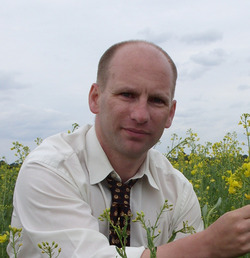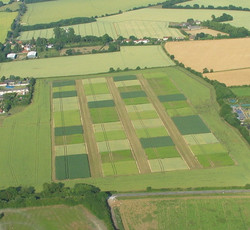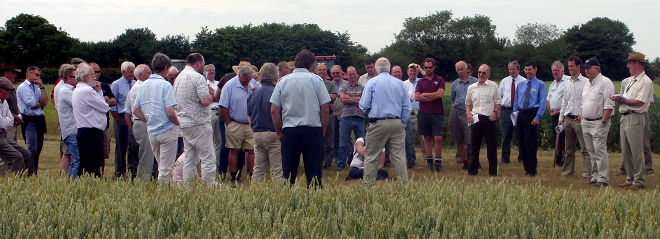 Growers who establish wheat using non-inversion cultivations should reduce grass weed populations with a range of techniques, rather than relying on high input herbicide programmes, advises NIAB TAG. For some rotations a return to the plough may be the most profitable option.
Growers who establish wheat using non-inversion cultivations should reduce grass weed populations with a range of techniques, rather than relying on high input herbicide programmes, advises NIAB TAG. For some rotations a return to the plough may be the most profitable option.
Interim results from the STAR Project, a long-term field-scale study exploring the interaction between four different rotations and four methods of establishment for arable production, highlights the importance of ploughing for grass weed control on heavy soils.
Cultivation techniques studied include annual ploughing, deep non-inversion tillage (to 20 cm), shallow non-inversion tillage (to 10 cm) and a managed approach where cultivation decisions are based on best practice guided by field conditions at the time of primary cultivations. As well as grass weed populations the project is investigating the long-term impact on yield and quality, soil structure and gross margins.
Ron Stobart, head of crop research communication at NIAB TAG, points to the lack of grass weeds when the project started in autumn 2005 and cautions against using herbicides as the only method of control.
 “In non-inversion continuous wheat treatments, despite a comprehensive herbicide programme, there has been a substantial build-up of grass weeds over the past five years, particularly meadow brome. The continuous wheat plots established using the plough or through a managed approach (where the plough has been used regularly), as well as all other rotational approaches, continue to show negligible numbers of any grass weed species.”
“In non-inversion continuous wheat treatments, despite a comprehensive herbicide programme, there has been a substantial build-up of grass weeds over the past five years, particularly meadow brome. The continuous wheat plots established using the plough or through a managed approach (where the plough has been used regularly), as well as all other rotational approaches, continue to show negligible numbers of any grass weed species.”
In the non inversion continuous wheat plots by 2008 there were 15 heads/m2 of meadow brome alongside low numbers of black-grass and wild oats. By 2009 numbers had increased to 22 heads/m2 in the deep non-inversion tillage and 45 heads/m2 in the shallow tillage plots, despite intensive herbicide programmes.
“When we began the study in autumn 2005 we knew there was a range of grass species present, but not at problem levels. We’ve clearly demonstrated how quickly and easily this change can occur to the extent that there would be a significant problem to rotational performance in commercial production.
“This season herbicide costs on the non-inversion continuous wheat treatments have been around £70/ha more than on the ploughed treatments; this will have a big impact on the profitability of the systems and growers need to consider this carefully when planning cultivation and rotation strategies,” advises Mr Stobart.
Sharing the project’s results with local arable farmers is a key objective of the study. Over 60 local growers attended the STAR Project’s Open Day near Otley in Suffolk on 6th July to hear the latest conclusions. The study is being carried out by NIAB TAG and funded by the Felix Thornley Cobbold Trust, a local initiative set up in 1910 that supports research into the advancement and improvement of agriculture.
“The STAR Project is an open and ongoing study which will continue to research and highlight the importance of rotation and cultivation choices on-farm locally and nationally, particularly as grass weed control is likely to become increasingly relevant in light of mounting resistance concerns and the loss of key herbicide products through the Water Framework Directive and as part of the revision of EU regulation 91/414,” says Mr Stobart.
Attached images:
- Ron Stobart
- Aerial view of the STAR Project trials
- Growers attending the STAR Project Open Day at Otley
For further information contact:
Ron Stobart, head of crop research communications, NIAB TAG
T: 01953 713209
M: 07957 966802
E: ron.stobart [at] thearablegroup.com
Issued by:
Ros Lloyd, Front Foot Communications
T: 01487 831425
E: ros.lloyd [at] frontfoot.uk.com

